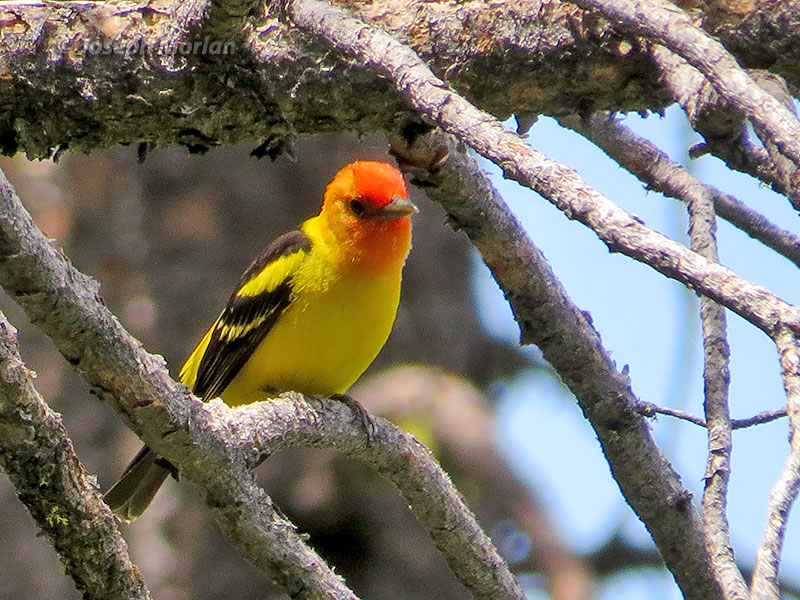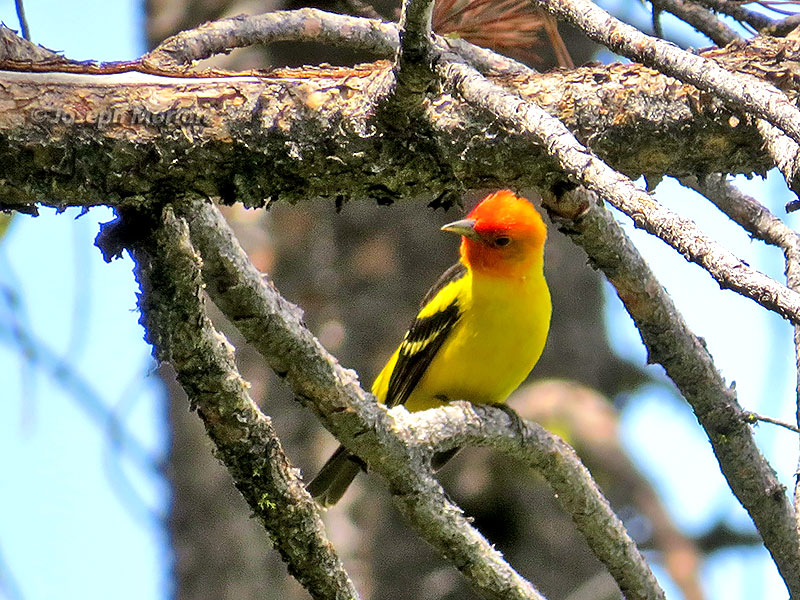

The bright red coloration of the adult male's head comes from the uncommon pigment rhodoxanthin acquired directly from food (Hudon 1990) . In other tanagers red pigments are derived from yellow xanthophyll precursors which are metabolized into red carotenoids. Rhodoxanthin is also responsible for variant Cedar Waxwings with orange tipped tails. Like other tanagers in the genus Piranga, the Western Tanager is no longer classified as a true tanager but is now included in the Cardinal family. Canon PowerShot SX50 HS
References:
Hilty, S. (2018). Western Tanager (Piranga ludoviciana). In: del Hoyo, J., Elliott, A., Sargatal, J., Christie, D.A. & de Juana, E. (eds.). Handbook of the Birds of the World Alive. Lynx Edicions, Barcelona. (retrieved from https://www.hbw.com/node/61828 on 25 October 2018).
Hudon, J. (1990). Unusual carotenoid use by the Western Tanager (Piranga ludoviciana) and its evolutionary implications. Can. J. Zool. no. 69:2311-2320.
Hudon, J. (1999). Western Tanager (Piranga ludoviciana), version 2.0. In The Birds of North America (A. F. Poole and F. B. Gill, Editors). Cornell Lab of Ornithology, Ithaca, NY, USA. https://doi.org/10.2173/bna.432